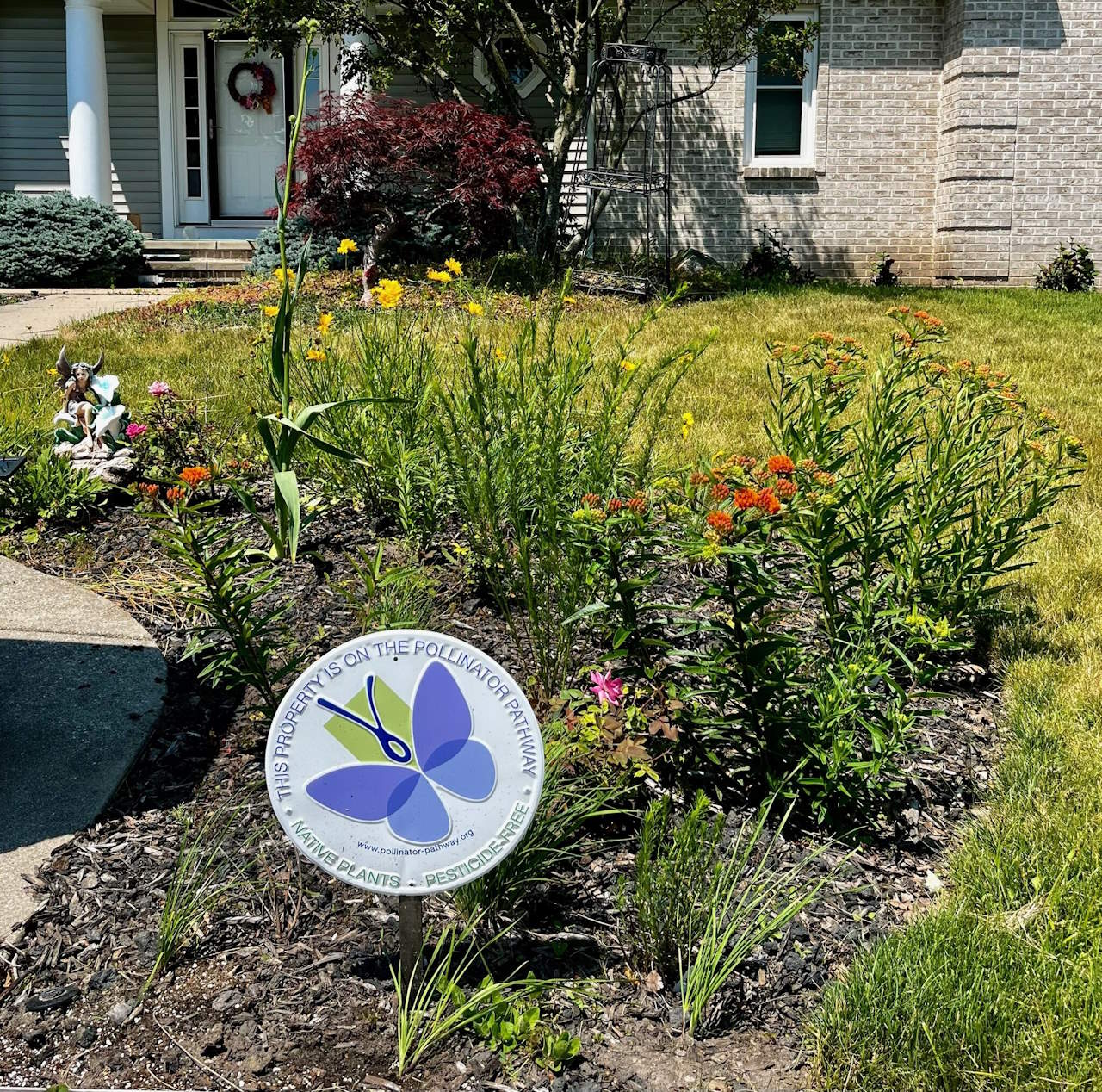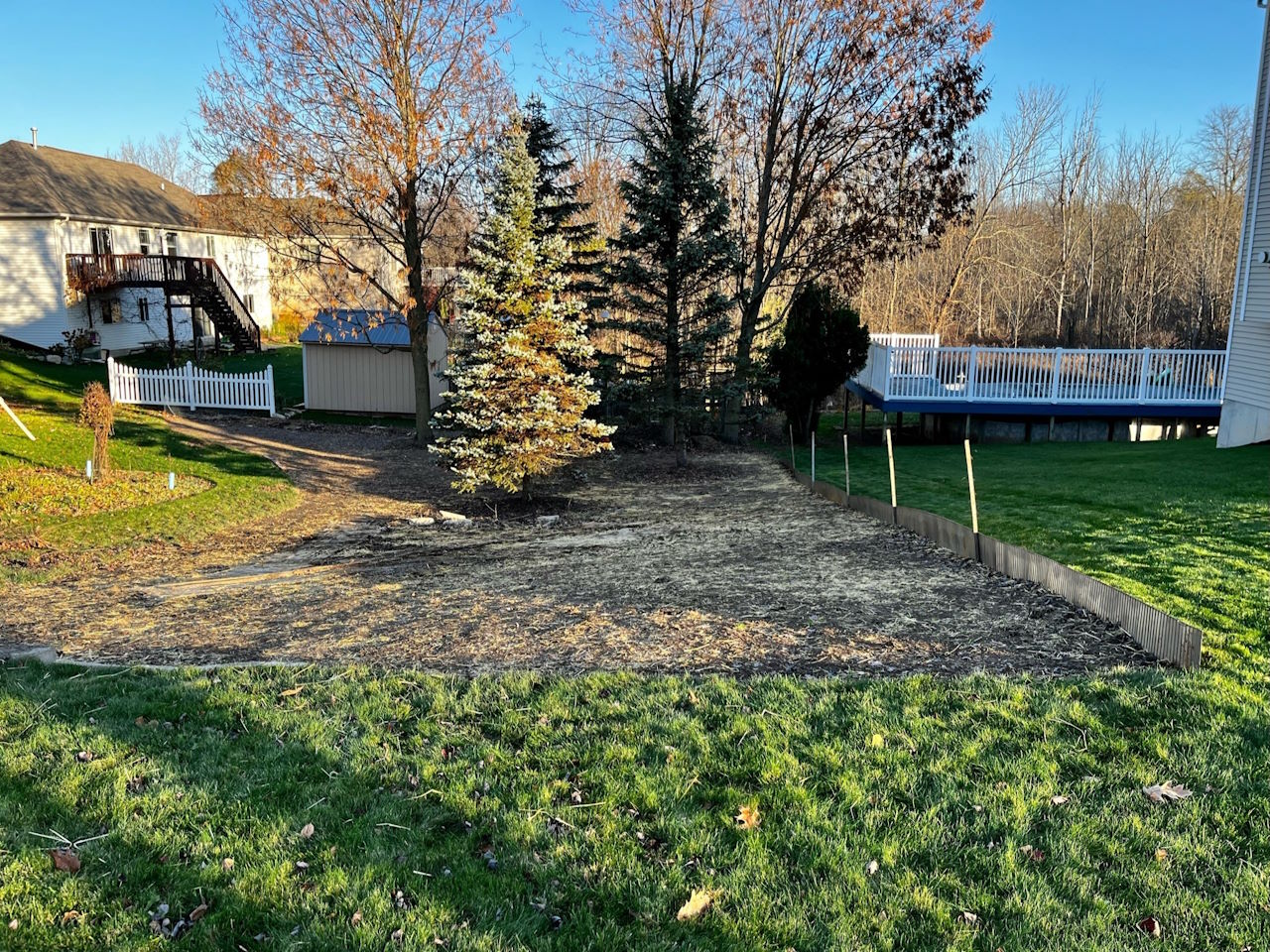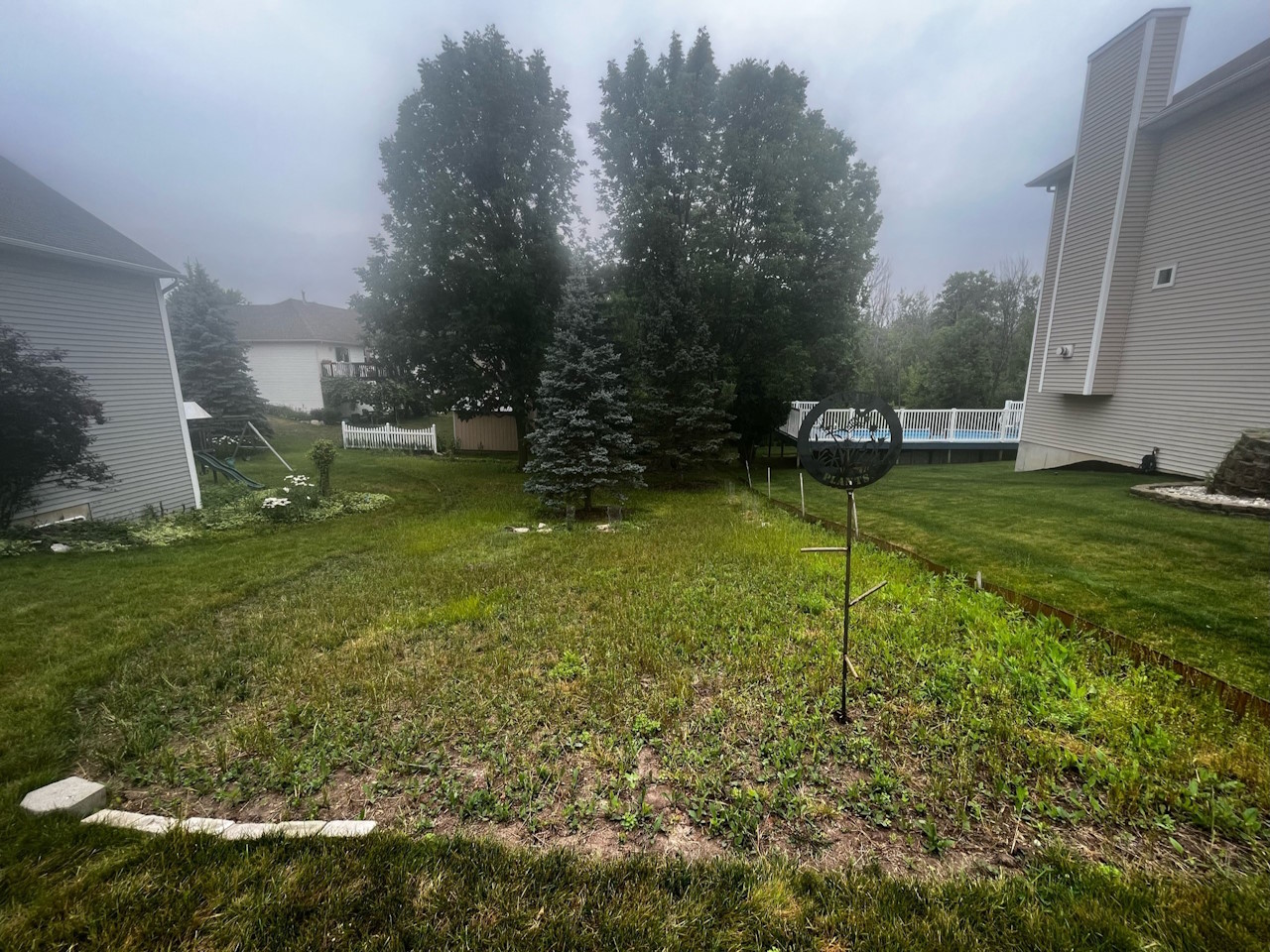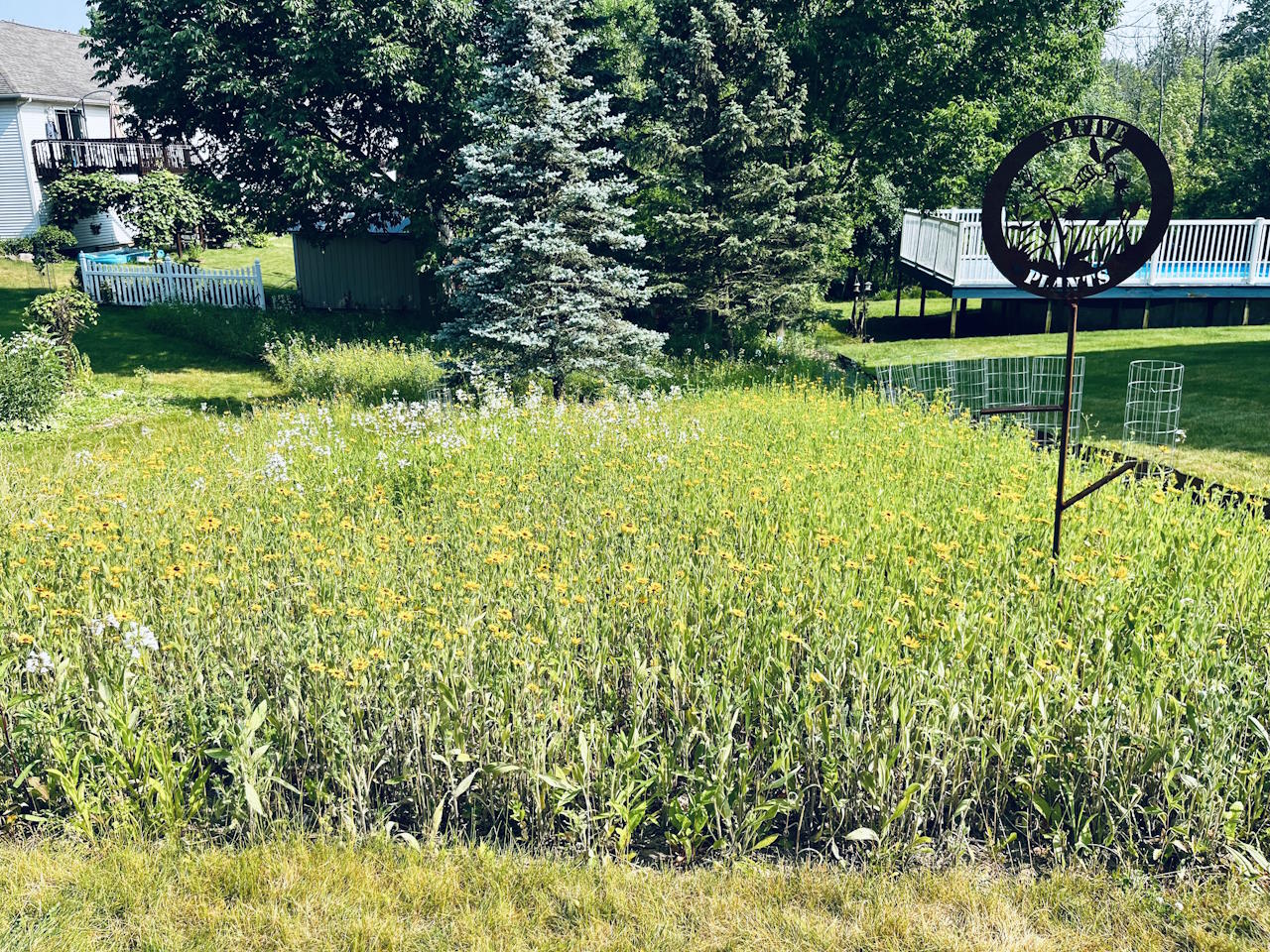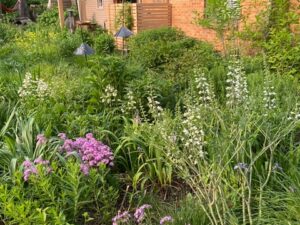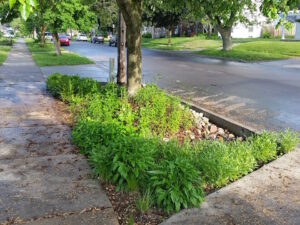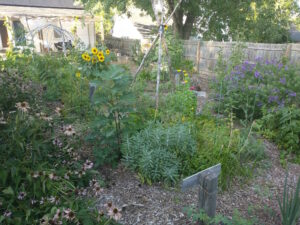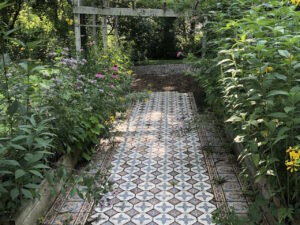Sometime in 2021, I decided that I wanted to get rid of an area of my lawn which was a pain to mow. It was often wet and on a fairly steep slope and it was an area that really had no benefit to anyone. I decided it would be a nice area to have an elegant wildflower meadow. I’ve always been very interested in nature, but I had never previously done anything meaningful to benefit nature, other than plant a few trees here or there and regularly donate to various charities like the Nature Conservancy and the Audubon Society. I was eager to do something bigger and more visible. I started researching places to buy Michigan native seeds (at least knowing I did not want invasive species) and researched plants for attracting hummingbirds. Little did I know that I would end up falling down the huge rabbit hole that is native plants.
2022 was a year of preparing the site. I had to kill the lawn in order to seed the meadow – seeds will not germinate without contact to soil. This was a long process – I used mainly the “solarization” method, which involves covering with plastic and letting the sun’s heat kill the grass below. In very late fall, I seeded a custom mix of 15 different native plant species from Michigan Wildflower Farm. It is mostly perennial wildflowers, but also includes some native grasses for support and structure plus a “cover crop” to hold the ground and fend off weeds while the perennials get established. Note that most native perennial seeds need a cold period (called cold stratification) to activate for germination. Therefore, if you want to grow from seed, you need to be sure to seed in late fall or early winter in order for the seeds to germinate in spring.
That winter was a long one – I couldn’t wait for things to take shape. I started learning more and more about maintaining the site, but even more about species selection and what plants are most beneficial. I started watching many YouTube videos with native plant experts like Dr. Doug Tallamy, who makes many convincing arguments for growing native species. One of the biggest benefits, which I admittedly was mostly unaware of, is the support of insects, specifically caterpillars. Many know that Monarch butterflies depend on milkweed, as this species has come into the spotlight in recent years as an internationally-recognized threatened species. What many people don’t know is that, in fact, Monarchs are not terribly unique in their dependency on specific plant species – most Lepidoptera (moths and butterflies) have actually evolved with and developed chemical relationships with specific plant hosts. These relationships are so complex that they will only lay their eggs on these plants, as their caterpillars can only survive by eating the leaves of said plants. These host plants are key to the ecosystem, as without them, there will be no caterpillars, and caterpillars are one of the main food sources for the majority of songbirds. This hit home as a bird lover. No native plants = no caterpillars = no birds. It all made sense and I was convinced I was doing the right thing.
In 2023, I was positively surprised by how well things had gone. I maintained the site by cutting back growth (to allow roots to grow and to prevent weeds from flowering and going to seed), and I was able to identify the majority of the plants that I intended to grow. I also observed a large amount of wildlife coming in already – several species of frogs and toads, most notably Northern Leopard Frogs, a species which, according to the National Park Service, “has suffered dramatic declines in the number and health of functioning metapopulations… [due to] habitat loss and degradation; introduction of exotic predators, such as nonnative fish, bullfrogs and crayfish; introduction of disease and pesticides; and climate change effects on aquatic habitats.” I also observed at least half a dozen butterfly and moth species, including the threatened Monarchs, which laid eggs on my existing milkweed plants. Bird species like the Great Crested Flycatcher and Gray Catbird, which are not common for urban backyards, appeared as well. Dragonflies, bees, grasshoppers, lady beetles, and many more insects also began enjoying the space.
In 2024, I have continued to be amazed. The “early spring” brought more wildlife, starting as early as February (wood frog). Mason bees and red admirals appeared in April. Foxglove beardtongue came on very strong in early June, filling the meadow with beautiful white blooms and buzzing miner bees. I added some nest boxes (which is a whole other rabbit hole of its own) and got nesting House Wrens and Black-capped chickadees (two clutches!). Weevils, calligrapher flies, lacewings, forktails, saddlebags, and more have been observed as well!
These past three years, I have really enjoyed learning about all of the benefits of native plants and have made a true hobby of researching, buying, and planting. I’ve been converting a few other small existing ornamental landscaped spots to mini pollinator gardens or “micro-prairies” as well. This has not been easy, but it’s certainly been rewarding. I hope this story inspires you to see how quickly nature can come back if just given the chance. I took approximately 3,000sqft of essentially useless turf grass lawn and made it into a valuable wildlife habitat in just a year’s time. Its value will only continue to grow – this year it is providing pollen for the declining bee and pollinator insect populations. It will also start to sequester carbon over time (native plants grow roots many times deeper than turf lawns, and meadows store more carbon than forests!) and have water filtration benefits as well. Going forward, I expect to continue to expand my usage of native plants and spread the love and knowledge around the neighborhood! I hope you will reach out for a visit so that I can answer any questions that you have. This is a great passion of mine and it will bring me joy to help others experience this beauty as well.

